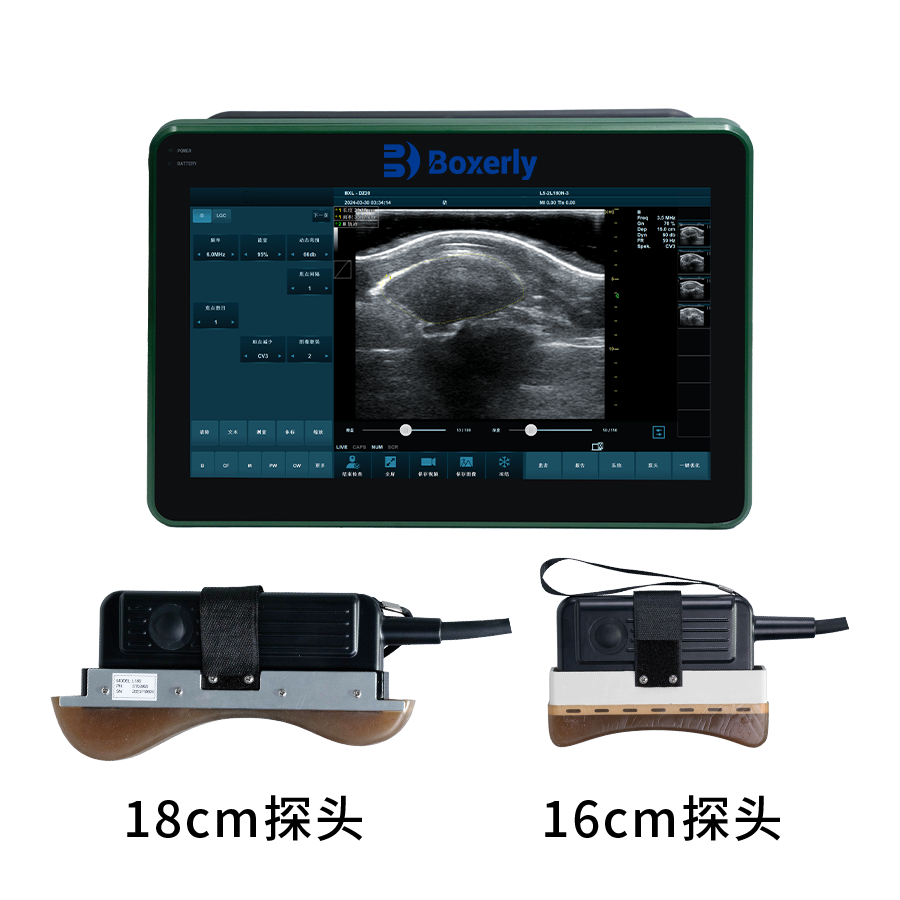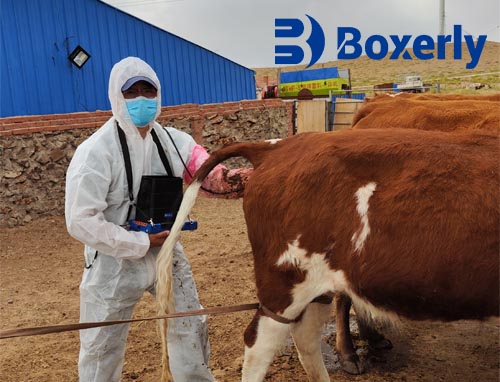In the fast-paced world of veterinary medicine, having access to reliable, real-time diagnostic tools can make all the difference in delivering effective care. One such tool that has gained widespread popularity in veterinary practices is the BXL veterinary point of care ultrasound. This portable, user-friendly device is transforming how veterinarians assess and diagnose various conditions in animals, particularly in emergency, field, and small animal settings.

In this article, we'll explore the uses, advantages, and key features of the BXL veterinary point of care ultrasound, and how it’s helping veterinary professionals provide fast, accurate, and efficient care for their patients.
1. What is BXL Veterinary Point of Care Ultrasound?
The BXL veterinary point of care ultrasound is a portable, high-resolution ultrasound machine designed specifically for veterinary use. Unlike traditional stationary ultrasound machines, which are typically confined to the clinic, the BXL ultrasound is lightweight and easy to transport, making it perfect for mobile veterinary practices, emergency situations, and remote diagnostics.
Point of care ultrasound (POC ultrasound) refers to diagnostic imaging performed at or near the site of patient care. This real-time imaging allows veterinarians to quickly assess an animal’s condition and make informed decisions about treatment or further diagnostics.
2. Key Features of the BXL Veterinary Point of Care Ultrasound
The BXL veterinary point of care ultrasound offers a variety of features that make it a standout choice for veterinarians. Some of its key features include:
Portability: The BXL ultrasound is designed for easy transport, whether you're working in a clinic, on a farm, or in emergency field situations. Its lightweight design and compact size make it ideal for mobile veterinarians.
High-Resolution Imaging: Despite its small size, the BXL provides high-quality, clear images that are essential for accurate diagnostics. It offers excellent resolution for viewing organs, tissues, and blood flow, making it suitable for a wide range of veterinary applications.
User-Friendly Interface: With its touchscreen controls and intuitive navigation, the BXL Veterinary ultrasound is easy to use, even for veterinarians who are new to ultrasound imaging. The simplified interface makes it accessible to a wide range of users, from general practitioners to emergency care providers.
Long Battery Life: The BXL ultrasound is equipped with a durable battery that can last for hours, allowing for continuous use during mobile visits, emergency calls, or prolonged fieldwork without the need for frequent recharging.
Multiple Probe Options: The BXL ultrasound is compatible with a variety of probes, including convex, linear, and phased-array probes, enabling veterinarians to perform a wide range of imaging tasks. The versatility of probe options makes it adaptable to different types of animals and diagnostic needs.
Affordability: The BXL veterinary ultrasound is generally more affordable than larger, stationary models, making it an excellent investment for veterinary practices of all sizes. It offers high-quality imaging at a fraction of the cost of traditional ultrasound machines.
3. Uses of BXL Veterinary Point of Care Ultrasound
The BXL veterinary point of care ultrasound is suitable for a wide variety of diagnostic applications. Its versatility makes it a valuable tool for both routine and emergency veterinary care. Some of the most common uses include:
1. Abdominal Imaging
Abdominal ultrasounds are one of the most common uses for the BXL veterinary ultrasound. This ultrasound is ideal for imaging organs such as the liver, kidneys, spleen, and bladder. It can help detect conditions such as:
- Small Animal Care: In pets, the BXL ultrasound is frequently used to diagnose conditions like kidney disease, liver enlargement, bladder stones, and abdominal tumors.
- Large Animal Care: In large animals, such as horses and cattle, abdominal ultrasound is crucial for diagnosing gastrointestinal problems, such as colic in horses, or internal bleeding in cattle.
2. Pregnancy Diagnosis and Monitoring
Point of care ultrasound is essential for confirming pregnancy in animals and monitoring fetal development. The BXL ultrasound allows veterinarians to detect pregnancy early, check the number of fetuses, and track their growth over time.
- Small Animals: The BXL is commonly used in small animal practices to diagnose pregnancy in dogs and cats and monitor the health of developing puppies or kittens.
- Large Animals: In large animal veterinary medicine, the BXL ultrasound helps monitor pregnancy in livestock, especially in cattle and horses, ensuring that the pregnancy is progressing without complications.
3. Cardiac and Circulatory Assessments
The BXL veterinary point of care ultrasound can be used to assess the heart and circulatory system in both small and large animals. It’s particularly useful for detecting:
- Heart Disease: Ultrasound imaging can reveal issues like heart valve problems, heart murmurs, and other signs of cardiovascular disease.
- Blood Flow: Doppler capabilities allow the BXL ultrasound to assess blood flow, which is particularly useful for detecting vascular conditions or abnormalities in blood circulation.
4. Soft Tissue Imaging
The BXL ultrasound is excellent for imaging soft tissues, such as muscles, tendons, ligaments, and organs. It can help diagnose a variety of musculoskeletal and soft tissue conditions, including:
- Injuries: Soft tissue injuries, such as sprains, tears, and tendon damage, can be diagnosed with the BXL ultrasound, particularly in small animals and horses.
- Tumor Detection: The BXL ultrasound can also detect abnormal growths or tumors in soft tissues, helping veterinarians make early diagnoses and plan treatment.
5. Fluid Collection and Guided Biopsies
In certain cases, veterinarians may use ultrasound to guide procedures such as fluid collection or biopsies. The BXL ultrasound provides real-time imaging to guide the precise placement of needles or aspirates in cases of suspected tumors or organ disease.
- Biopsy Guidance: The BXL ultrasound is frequently used to guide biopsies of organs like the liver, spleen, or kidneys, as well as lymph nodes or tumors.
- Fluid Drainage: It is also used for guiding the drainage of excess fluid, such as in cases of pleural effusion or peritoneal effusion.
4. Advantages of BXL Veterinary Point of Care Ultrasound
The BXL veterinary point of care ultrasound offers numerous advantages to veterinarians:
Immediate Results: Point of care ultrasound enables real-time diagnostics, allowing veterinarians to make quick decisions without waiting for off-site imaging results. This is especially crucial in emergency situations.
Portability and Flexibility: The lightweight design of the BXL ultrasound makes it ideal for use in diverse settings, from emergency calls to field visits. Its portability ensures that it can be used in virtually any environment, whether inside a clinic, on a farm, or at the site of an accident.
Cost-Effective: The BXL ultrasound provides exceptional value for money. It delivers high-quality imaging at a price point that makes it accessible for both small and large veterinary practices, ensuring that high-quality diagnostics are available to a wide range of practices.
User-Friendly Design: The intuitive touchscreen interface and straightforward controls ensure that even novice users can operate the BXL ultrasound with minimal training. This is particularly important for emergency situations, where speed and accuracy are essential.
Comprehensive Diagnostic Capabilities: From imaging organs and diagnosing pregnancy to assessing cardiovascular health and guiding biopsies, the BXL veterinary ultrasound offers a wide range of diagnostic uses, making it a versatile tool for veterinary professionals.
5. Conclusion: Why Choose BXL Veterinary Point of Care Ultrasound?
The BXL veterinary point of care ultrasound is revolutionizing how veterinary professionals approach patient care. Its portability, ease of use, and high-quality imaging make it an indispensable tool in both emergency and routine diagnostics. Whether you’re a small animal veterinarian, a large animal practitioner, or a mobile vet, the BXL ultrasound allows you to provide faster, more accurate diagnoses, improving patient outcomes and enhancing the overall efficiency of your practice.
If you are looking for a reliable, cost-effective, and portable ultrasound solution for your veterinary practice, the BXL veterinary point of care ultrasound is an excellent choice. By integrating this powerful diagnostic tool into your practice, you can elevate the standard of care you offer and ensure that your patients receive the best possible treatment in a timely manner.







